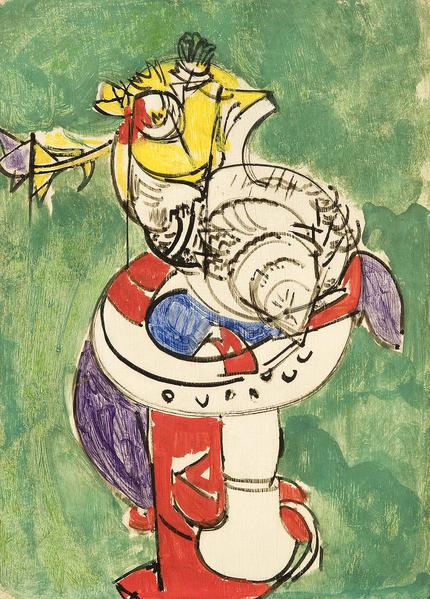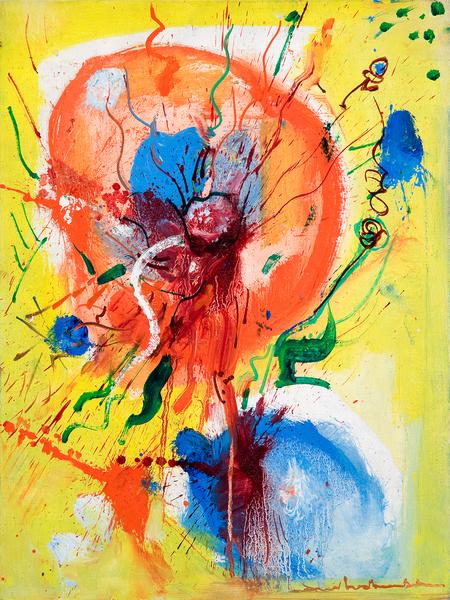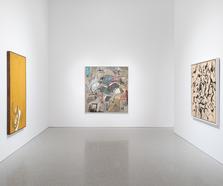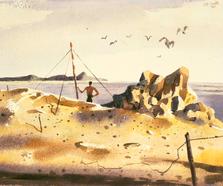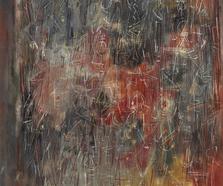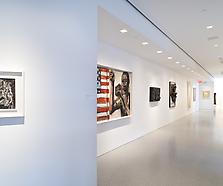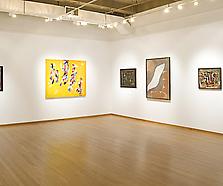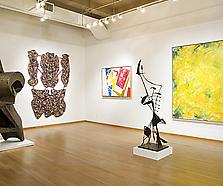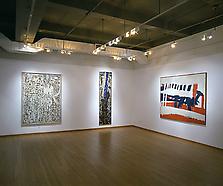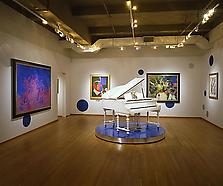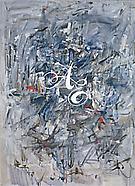“The magic of painting…can never be fully, rationally explained. It is the harmony of heart and mind in the capacity of feeling into things that plays the instrument. The instrument answers the throb of the heart in every instance. Painting is always intuitively conditioned…Pictorial life is not imitated life; it is, on the contrary, a created reality based on the inherent life within every medium of expression. We have only to awaken it.” *
Born in Germany in 1880, Hans Hofmann was by far the oldest of the abstract expressionists, although his artwork of the 1950s and 1960s contains a youthful exuberance that is balanced by a masterful understanding of color’s expressive and formal potential. In Europe, Hofmann was a respected teacher and painter. In 1904, he studied at the Académie Colarossi and the Académie de la Grande Chaumière in Paris, where he met Picasso, Georges Braque, and Henri Matisse. In Germany, he exhibited with the Neue Sezession and the Paul Cassirer Gallery in Berlin before settling in Munich and opening an art school in 1915, the Schule für Bildes Kunst, which acquired an international reputation in the years following World War I. In 1930, Worth Ryder, a former student of Hofmann’s and a professor at the University of California, Berkeley, invited Hofmann to teach a summer session. Hofmann returned to the United States the following year, and in 1932, he decided to stay in the country given the rising hostility in Germany towards artists and intellectuals. Hofmann settled in New York, where he procured a teaching position at the Art Students League with the help of Vaclav Vytlacil. In 1934, he opened the Hofmann School of Fine Art at 137 East 57th Street in New York. From its inception, the Hofmann School (which moved to 52 West Eighth Street in 1938) taught an impressive list of students, including, Frank Stella, Wolf Kahn, Lee Krasner, Red Grooms, and Helen Frankenthaler. In 1935, Hofmann also opened a summer school in Provincetown, Massachusetts.
An enthusiastic and admired teacher, Hofmann was a respected painter throughout his career. In 1941, the year he became a U.S. citizen, Hofmann had a solo exhibition at the Isaac Delgado Museum of Art in New Orleans. His first New York show was at Peggy Guggenheim’s Art of this Century Gallery in 1944. The following year, the Whitney mounted Contemporary American Painting,

